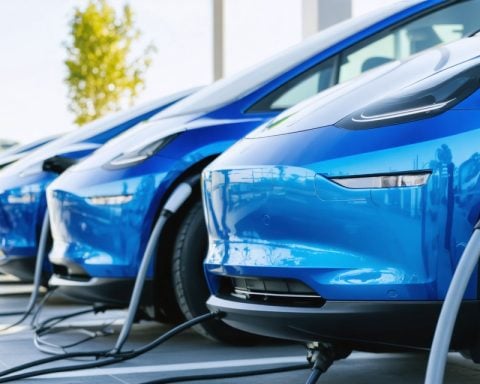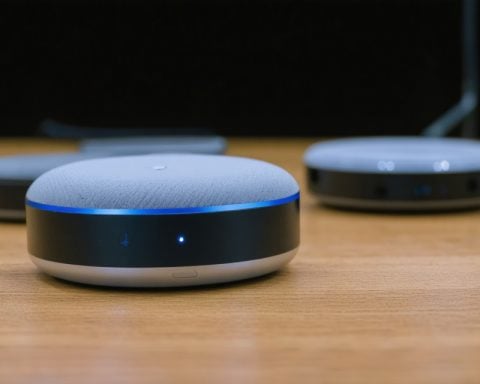- The 2025 Hyundai Ioniq 5 features a factory-installed North American Charging Standard (NACS) plug, making it the first non-Tesla vehicle to do so.
- At a Tesla Supercharger, the Ioniq 5 charged at 126 kW, which is lower than its maximum 350 kW capability.
- The Ioniq 5’s charging experience is impacted by Supercharger layout, designed for Tesla’s driver’s side ports and short cables.
- Hyundai’s strategic placement of the charging port reduces many potential connectivity issues at Supercharger stations.
- Initial charging estimates suggested 50 minutes, but adjustments to an 80% limit reduced time to 17 minutes.
- While using Tesla’s network, Ioniq 5 owners should anticipate moderate charging speeds as automakers work toward improved compatibility.
A sun-drenched day in Palm Desert, California, revealed a revelation many electric vehicle enthusiasts might not expect. The newly minted 2025 Hyundai Ioniq 5, famed for its nimble charging capabilities, took a breather in its race. At a Tesla Supercharger, it registered a modest 126 kilowatts—an eyebrow-raising figure for a car known to thrive on the energy of 350 kW chargers.
Imagine a cheetah, built for speed, choosing a leisurely stroll instead. That’s the Ioniq 5 when coupled with the Tesla-style North American Charging Standard (NACS) plug. Yet, this isn’t a story of disappointment. Instead, it’s a moment of understanding for those cruising through the electric frontier.
The charging truth unveils that although the Ioniq 5 is the first non-Tesla vehicle equipped with a factory NACS plug, potential snag lies in the layout of Superchargers. With Tesla’s driver’s side ports and their notably short cables, occasionally, there’s a clamorous dance around the charging stations. Fortunately, Hyundai’s strategic port placement circumvents most hurdles, turning a potential waltz into a smooth tango.
Once connected, the initial estimates invoked a gasp—charging slated for 50 long minutes. But clarity joined the journey as the settings adjusted wisely to 80%, shrinking the waiting game to a mere 17-minute intermission—a brisk coffee stop instead of a three-course meal.
For any Hyundai Ioniq 5 owner, the vital takeaway remains clear: while Tesla’s Supercharger network offers its hospitality, expect the speed to be more akin to a scenic drive rather than a burnout on the racetrack. As automakers roll out more versatility and understanding grows, what seems like a hiccup today might well become a hallmark of tomorrow’s seamless electric travel.
Charging Secrets of the Hyundai Ioniq 5: What You Need to Know
How-To Steps & Life Hacks
1. Select the Right Charger: For optimal charging speeds, seek out 350 kW-capable charging stations when possible. These cater to the Hyundai Ioniq 5’s fast-charging prowess, reducing wait times significantly.
2. Preconditioning the Battery: Like warming up your car in the winter, ensure your Ioniq 5’s battery is preconditioned before charging. This can sometimes help achieve faster charging speeds.
3. Set Charging Limits: To extend battery life, regularly set charging limits at or below 80% unless you need the full range for an upcoming trip.
Real-World Use Cases
– Daily Commutes: On a typical commute, the Ioniq 5 paired with Tesla’s Supercharger may suffice given its ample range and strategic port placement.
– Long-Distance Travel: For longer trips, plan your route around charging stations that offer the fastest charging options to minimize downtime.
Market Forecasts & Industry Trends
The adoption of the NACS standard by non-Tesla vehicles like the Hyundai Ioniq 5 signals a broader industry shift towards universal charging solutions. This change is likely to spur the expansion of charging networks and compatibility improvements.
Reviews & Comparisons
– Hyundai Ioniq 5 vs. Tesla Model Y: While Tesla boasts a more extensive Supercharger network, the Ioniq 5 competes with its contemporary design and innovation in features such as bi-directional charging.
Controversies & Limitations
While the Hyundai Ioniq 5’s use of the NACS plug is innovative, one limitation is less-than-optimal charging speeds at Tesla Superchargers. Hyundai is expected to enhance compatibility in future updates.
Features, Specs & Pricing
– Features: Includes an infotainment system with Android Auto, Apple CarPlay, and advanced safety features like automatic emergency braking.
– Pricing: Pricing for the 2025 Hyundai Ioniq 5 starts around $45,000, depending on the model and optional features chosen.
Security & Sustainability
Hyundai emphasizes sustainability in the Ioniq 5, using recycled materials and offering eco-friendly options. Security features include a robust suite of driver-assist technologies.
Insights & Predictions
Expect significant growth in EV infrastructure and a focus on interoperability among different EV brands. Hyundai’s strategies point towards wider NACS adoption, enhancing future compatibility and user experience.
Tutorials & Compatibility
– Compatibility with Charging Networks: The Ioniq 5 is primarily designed for compatibility with public charging stations including Electrify America and, with current limitations, Tesla Superchargers.
Pros & Cons Overview
Pros:
– Stylish design and advanced technology
– Wide availability of charging options, especially with NACS support
– User-friendly features and spacious interiors
Cons:
– Inconsistent charging speeds on certain networks
– Higher price point compared to some competitors
Actionable Recommendations
1. Plan Your Routes: Incorporate multiple stops at high-speed chargers along longer journeys.
2. Update Regularly: Keep up with software updates that could enhance charging speeds and compatibility.
3. Join EV Communities: Participate in forums and social media groups to stay updated on user experiences and tips.
For more information on electric vehicles and sustainable innovation, visit Hyundai.
Embrace the future of driving by optimizing your electric vehicle experience and staying informed on industry shifts and cutting-edge technology!














